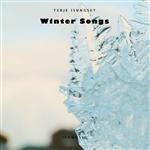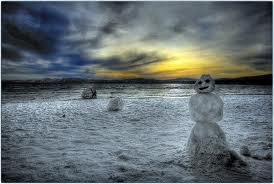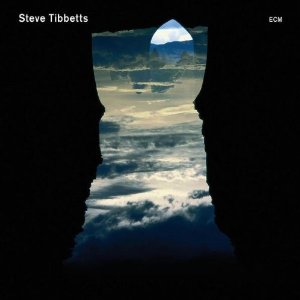 There are particular dreams that are bizarrely universal: flying, trying to run with leaden feet, screaming with the voice caught in the throat…or playing beautiful music upon an instrument with which, in waking life, one is quite unfamiliar. You know the dream: you are asked to sit at the piano and play; you are bracing yourself for humiliation, you lay your hands upon the keys and allow them to begin roaming around; your actions are frighteningly random but what issues forth is beautiful, mysterious, a direct connection with your soul. As your confidence builds and you realize that there is really nothing to this “musician” thing, you explore the whole keyboard; but somewhere inside of you, maybe in the part of your consciousness that could at any moment awaken, you know that what your hands are doing and the sounds being produced are completely disconnected.
There are particular dreams that are bizarrely universal: flying, trying to run with leaden feet, screaming with the voice caught in the throat…or playing beautiful music upon an instrument with which, in waking life, one is quite unfamiliar. You know the dream: you are asked to sit at the piano and play; you are bracing yourself for humiliation, you lay your hands upon the keys and allow them to begin roaming around; your actions are frighteningly random but what issues forth is beautiful, mysterious, a direct connection with your soul. As your confidence builds and you realize that there is really nothing to this “musician” thing, you explore the whole keyboard; but somewhere inside of you, maybe in the part of your consciousness that could at any moment awaken, you know that what your hands are doing and the sounds being produced are completely disconnected.
An unruly percentage of the “popular” music we to which the masses are exposed reveals a type of perspective that has become so familiar that we sometimes mistake it for all of Reality. In the realm of painting it is referred to as “vanishing point perspective”. It is based upon the idea that, if parallel lines (problematic in modern geometry as it is) were somehow projected upon one’s optical field, they would eventually converge to a point. Perspective painting was a brilliant Renaissance discovery that became the norm in visual art from its birth in the 15th century to demise in the 20th.
 The same dissolution of “perspective” has taken place in modern music, simply not in what most of us are presented with – especially on the radio. (Understand, I am not judging popular music as “good” or “bad”- just dominant.) Pop on the cd player your favorite Dave Matthews album. Close your eyes and try and see what you hear. There’s Dave, front and center; sure enough, the bass player is over there on the left; and the other guitar player is on the right with the keyboards; and, yes, the drummer is at the back of the “stage”. Now they will lead us through a “song” with its beginning and its end, its middle bit, its verses and choruses. We will feel complete at the end because there was some sort of return – either in theme or in tonal center (if we started in the key of C, we probably ended in the key of C). Now, this is not to say that writing the perfect pop song is easy by any stretch of the imagination. There is a craft involved in this type of music that, when successful, is impeccable. What I am pointing to is formula and perspective.
The same dissolution of “perspective” has taken place in modern music, simply not in what most of us are presented with – especially on the radio. (Understand, I am not judging popular music as “good” or “bad”- just dominant.) Pop on the cd player your favorite Dave Matthews album. Close your eyes and try and see what you hear. There’s Dave, front and center; sure enough, the bass player is over there on the left; and the other guitar player is on the right with the keyboards; and, yes, the drummer is at the back of the “stage”. Now they will lead us through a “song” with its beginning and its end, its middle bit, its verses and choruses. We will feel complete at the end because there was some sort of return – either in theme or in tonal center (if we started in the key of C, we probably ended in the key of C). Now, this is not to say that writing the perfect pop song is easy by any stretch of the imagination. There is a craft involved in this type of music that, when successful, is impeccable. What I am pointing to is formula and perspective.
Now who is to say that the perspective of the dream is any less real or relevant than the dominant Cartesian grid? Who is really to say that reality does not play itself out in a series of interlocking spheres, or a diaphanous bubble of interconnectivity. It is virtually impossible to picture Scott Tuma’s music taking place inside a sterile studio, much less in any particular time or place. Instead, it is more like walking into the cloud of someone else’s dreamscape: a dusty front porch in an Alabama bayou; Great Aunt Ida’s house in rural Pennsylvania – she’s not there, but the music is coming from behind that door. You see the musicians playing but the sound is incongruent with the motion – those hands could not possibly create that music, but you know they do.
“Dandelion” merges the realms of memory and dream. It is “aperspectival”. There is no real beginning; no end; no palpable sense of place; no linear sense of time. Events simply float onto the aural landscape; they remain just long enough to be acknowledged and then they are gone. What remains is not so much a story, or a melody, or even a poem or a song, but an impression – a ghostly impression of some past or future that exists only ephemerally. Tuma’s music likens itself to a cool breeze that touches one’s skin, but in an environment where no breeze is possible.
We tend to think of the dominant paradigm, or our view of our place in the cosmos, as something real, something permanent. It is difficult to imagine that it could have once been different or could, at some point in the future, change again. But we need only examine the artifacts of our species to see that this is so – that we could move from this world:
 Listen to a song from “Dandelion” here:
Listen to a song from “Dandelion” here:
Buy it here:
http://boomkat.com/cds/345171-scott-tuma-dandelion-expanded-cd-edition









